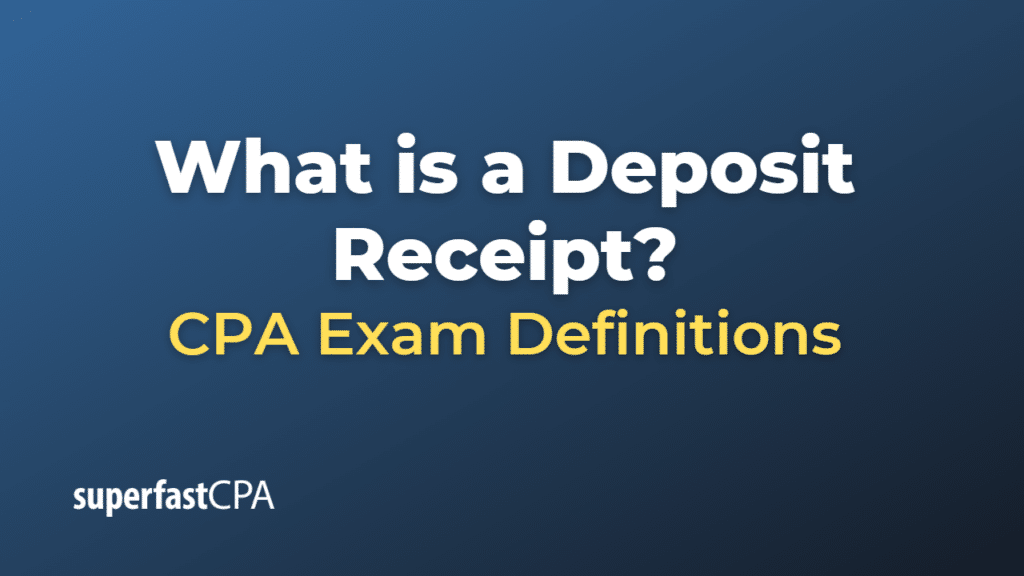Deposit Receipt
A deposit receipt is a document issued by a bank to a depositor to confirm that money has been deposited into an account. This receipt serves as proof of deposit and typically includes the following information:
- The date of the deposit
- The amount deposited
- The account into which the funds were deposited
- The method of deposit (cash, check, wire transfer, etc.)
- The bank employee who received the deposit
- The current balance of the account after the deposit
In addition to bank transactions, deposit receipts can also be issued in other situations where a deposit is made, such as a down payment on a purchase, a rental security deposit, or any other transaction where funds are given for safekeeping or towards a larger amount. These receipts serve as a proof of payment and help both parties keep track of payments and ensure a clear understanding of the amount paid.
It’s important for individuals and businesses to keep a record of deposit receipts as they provide evidence of transactions and can be helpful for future reference, accounting purposes, and potential dispute resolution.
Example of a Deposit Receipt
Here’s an example of a situation involving a deposit receipt:
Let’s say you are renting an apartment, and your landlord requires a security deposit of $1,000. You provide the landlord with this amount, and in return, the landlord gives you a deposit receipt.
This deposit receipt might include the following information:
- Date of deposit: May 18, 2023
- Amount of deposit: $1,000
- Received by: John Doe (Landlord)
- Purpose of deposit: Security deposit for rental property located at 123 Elm Street
- Method of payment: Cash
- Signature of receiver: John Doe
The deposit receipt serves as proof that you’ve paid the security deposit. If any disputes arise later about whether you paid the deposit, you can refer to this receipt.
It’s a good idea to keep this receipt in a safe place, and you might also want to take a picture of it as a backup. This way, you have all the necessary proof about the transaction, which can be especially important when you decide to move out and want to recover your security deposit.













